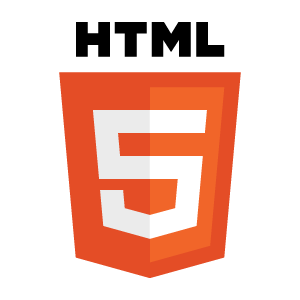
HTML
Document Structure:
<html>: Defines the root of an HTML document.<head>: Contains meta-information about the document.<title>: Sets the title of the document displayed in the browser.<meta>: Provides metadata about the document.<link>: Specifies relationships between the current document and external resources.<style>: Defines inline CSS styles.<script>: Embeds or references external scripts.<noscript>: Provides alternative content for users with disabled scripts.<base>: Specifies a base URL for relative URLs in the document.
Code Editor
Code Editor H1-H6
Text Content:
<p>: Defines a paragraph.<h1>to<h6>: Define headings of different levels.<strong>: Represents strong importance (bold).<em>: Represents emphasized text (italic).<u>: Underlines text.<s>: Renders text with a strikethrough.<blockquote>: Defines a section that is a longer quote from another source.<q>: Defines a short inline quotation.<abbr>: Defines an abbreviation or acronym.<code>: Represents computer code.<pre>: Defines preformatted text, preserving both spaces and line breaks.<a>: Creates a hyperlink.<ul>: Defines an unordered list.<ol>: Defines an ordered list.<li>: Defines a list item.<dl>: Defines a description list.<dt>: Defines a term/name in a description list.<dd>: Defines the description of a term in a description list.
Code Editor: using all above tags
Multimedia:
<img>: Embeds an image.<audio>: Embeds audio content.<video>: Embeds video content.<iframe>: Embeds an external webpage within the current page.
Code Editor : using all above tags
Forms and Input:
<form>: Creates an HTML form.<input>: Creates an input field.<textarea>: Creates a multiline text input.<button>: Creates a clickable button.<select>: Creates a dropdown list.<option>: Defines an option in a<select>element.<label>: Defines a label for an input element.<fieldset>: Groups related elements in a form.<legend>: Defines a caption for a<fieldset>element.<radio>: Creates a radio button.<checkbox>: Creates a checkbox.<submit>: Creates a submit button.
Code Editor : using all above tags
Line Break and Horizontal Rule:
<br>: Inserts a line break, primarily used within text content.<hr>: Represents a thematic break or horizontal rule in the content.
Code Editor : using all above tags
Semantic Elements:
<header>: Represents a container for introductory content.<nav>: Defines navigation links.<main>: Contains the main content of the document.<article>: Represents a self-contained composition.<section>: Defines a section in a document.<aside>: Represents content aside from the main content.<footer>: Represents the footer of a document or a section.<figure>: Contains media content and its caption.<figcaption>: Represents the caption for a<figure>element.<mark>: Highlights text.
Code Editor : using all above tags
Created with HTML

